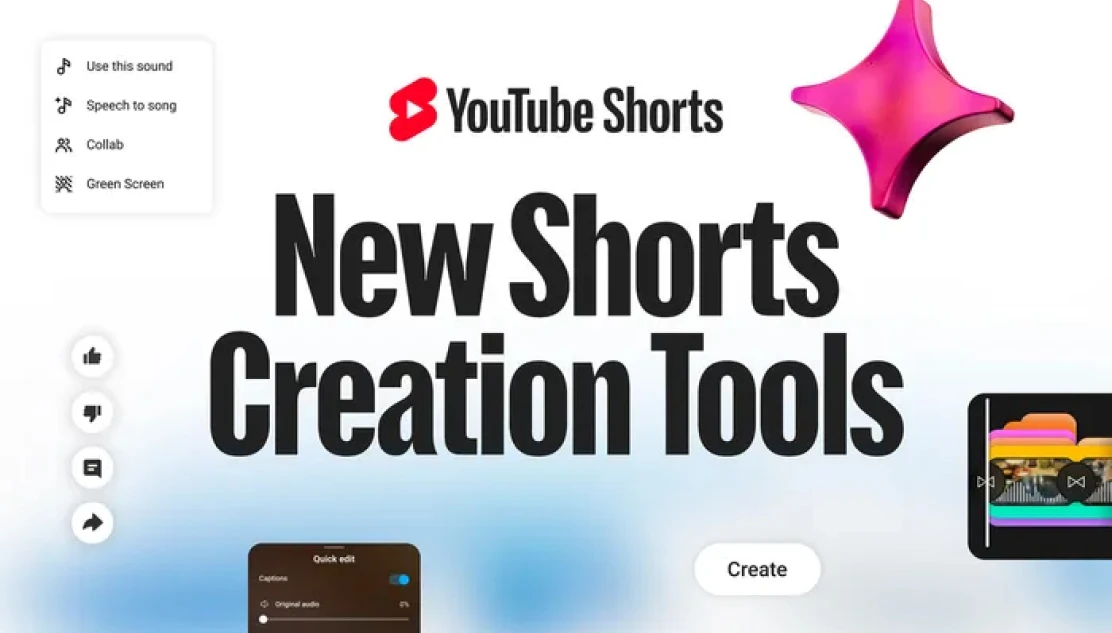But what exactly is YouTube offering, and how does this reshape the landscape for creators?
Turning Photos Into Motion
One of the headline features is the ability to animate static images by applying motion from a different video source. Imagine taking a portrait photo and making it dance using motion captured from another clip.
This mirrors what specialized AI platforms have been offering for a while. For example, tools like Animate Image already allow creators to bring stills to life with expressive motion and perspective shifts. YouTube’s approach is integrated into Shorts, providing formats, styles, and use cases beyond social media.

Stylization at Scale
Creators will soon be able to stylize entire videos into formats like origami, pop-art, or other artistic looks. YouTube’s goal is to make Shorts more visually striking, but the demand for stylization isn’t new.
There is tools like Image Style Transfer and AI Video Generation, giving creators deeper control over resolution, frame rate, and unique aesthetics. For advertisers or designers looking for branded content, these specialized tools may provide a competitive edge versus YouTube’s more template-driven filters.
Edit With AI: Drafts Made Simple
Another major feature is “Edit with AI”, which automatically cuts raw footage into a draft with highlights, music, transitions, and even a voice-over (currently available in English and Hindi).
While this is a massive time saver inside YouTube, creators looking for more freedom may prefer standalone tools. Artificial Studio, for instance, offers AI Video Editor and AI Voice Generator, which allow users to refine edits or generate narrations in multiple voices and languages — without being limited to YouTube’s preset structures.
###From Dialogue to Song
Perhaps the most experimental feature is Speech-to-Song, powered by DeepMind’s Lyria 2. With it, dialogue from a video can be remixed into a full track, with selectable moods like “danceable” or “chill.”
It’s a fun entry point for users unfamiliar with audio AI. Our platform already provides Music Generator tool, which allows musicians and content creators to go further: composing from scratch, generating album covers, or creating royalty-free background tracks for ads and campaigns.
Transparency and Trust
To address concerns around synthetic content, YouTube is rolling out SynthID watermarks and “AI-generated” labels. This is crucial, especially as reports show that millions of YouTube videos have already been used in datasets to train AI models, often without clear creator consent.
Here’s where alternative platforms can stand out: Artificial Studio, for example, already gives creators control over attribution and allows them to keep generated content watermarked or clean depending on the use case. Trust and transparency will likely become a key differentiator between giants like YouTube and independent platforms.
What This Means for Creators
The message is clear: AI video tools are no longer experimental — they’re mainstream. YouTube wants every creator, from casual vloggers to professional marketers, to use AI inside its ecosystem. But with the rise of independent platforms, creators now have a choice: Use YouTube’s built-in tools for convenience, speed, and reach. Or explore platforms like Artificial Studio, Runway, or Krea for higher creative freedom, better control over IP, and export flexibility.
In practice, many creators will blend both approaches — editing a first draft with YouTube AI, then improving it with specialized tools like the ones we have in the Artificial Studio platform.
YouTube’s new AI tools show how fast the industry is moving. What was once exclusive to cutting-edge startups — like motion transfer, AI stylization, or text-to-song — is now becoming a default feature inside mainstream platforms. For creators, the opportunity is massive: more ways to experiment, save time, and scale content. But the challenge is just as big: staying ahead of algorithms, protecting creative rights, and choosing the right mix of tools to stand out in an increasingly AI-powered world.
Related reading:

